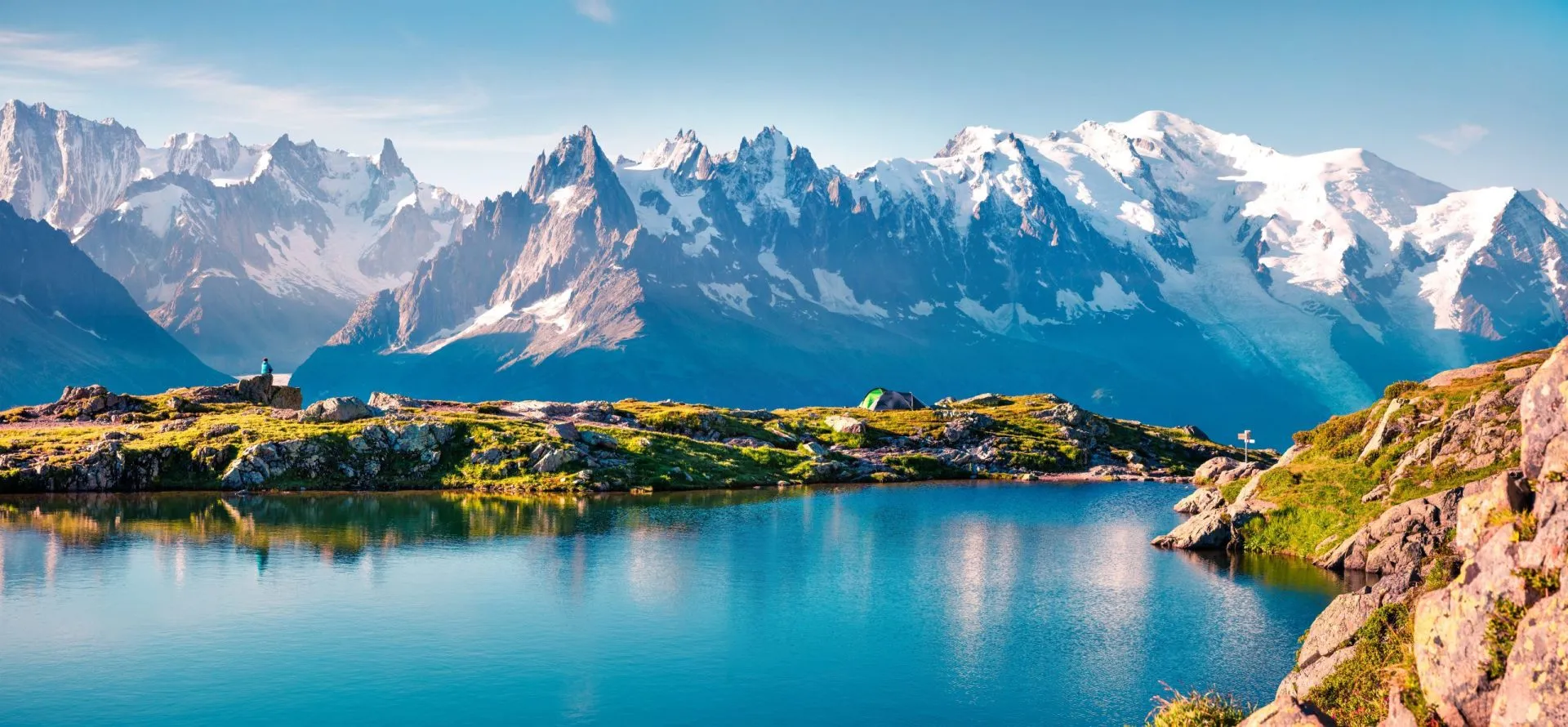The Tour du Mont Blanc (TMB) is one of the most famous long-distance treks in the world, circuiting the highest peak of Western Europe in about 170 kilometers. Its landscape is some of the most awe-inspiring in Europe, with a stunning and diverse combination of glaciers, alpine meadows, snow-capped peaks, lakes, rivers, and waterfalls, which makes it hugely popular with tourists and hikers alike.
If you’re interested in hiking this incredible route yourself, continue reading and learn everything you need to know about hiking and completing the TMB.
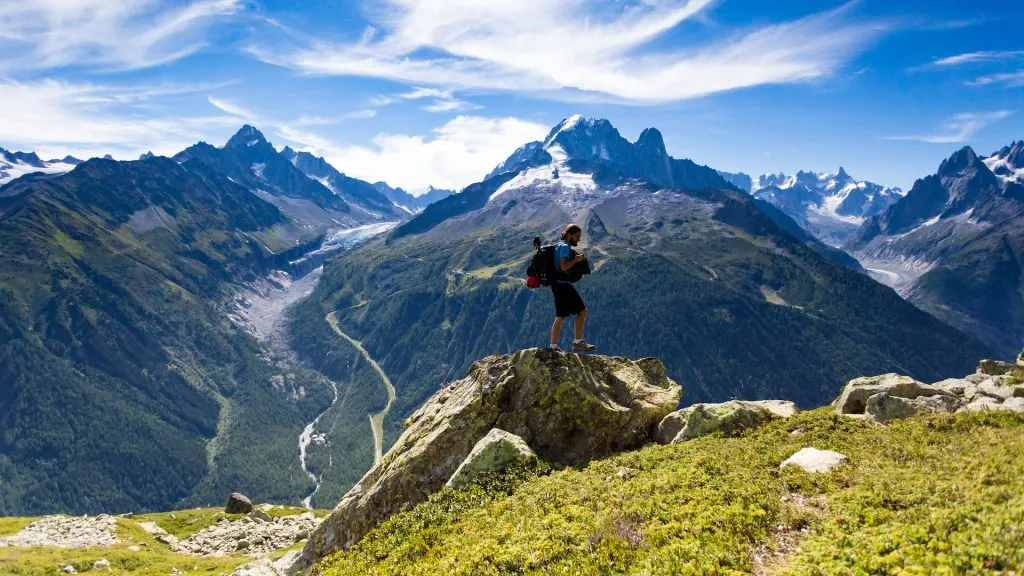
Where does the Tour du Mont Blanc trail go?
Total length: Around 170 km (depending on the number of alternative routes taken)
Total elevation gain: Around 10,000 m
No. of stages: 11
Countries: France, Italy, Switzerland
The name “tour du Mont Blanc” is in French and means literally “around Mont Blanc”. As this name suggests, the trail takes you around Western Europe’s highest mountain peak.
And because that peak is actually just part of a massive mountain range, called the Mont Blanc massif, the trail around it is much more epic than going around a lone mountain.
The scenery along the Tour du Mont Blanc hike is unmatched, ranging from the lunar-like Aiguille Rouges to the valley pastures of Les Contamines. But no matter what, there’s always a constant backdrop of the Mont Blanc range.
It leads you around the impenetrable wall of mountains over many mountain passes (called cols), through valleys, and on the sides of the mountains. Sometimes it also takes you along a mountain ridge, but that’s more of an exception than a rule.
Its official start is in Les Houches (just south of Chamonix), going through the towns of Les Contamines, Courmayeur, La Fouly, Champex-Lac, Trient, and Argentière. It never actually goes through the town of Chamonix, although many people start their hike just there.
You can play with the map above or read the itinerary of our 11-day Self-guided Tour du Mont Blanc to get more details about each of its 11 stages.
Classic TMB itinerary
The Tour du Mont Blanc (TMB) offers a plethora of accommodation options, with numerous combinations available for booking huts along the trail. While there are many ways to experience the TMB, the following itinerary is one of the most commonly referenced routes for hikers looking to immerse themselves in the stunning landscapes and charming villages that make this trek so iconic.
Day 1: Les Houches – Refuge Miage
The journey commences in Les Houches, with the option to ascend to Bellevue via cable car or on foot. The path unveils stunning views of the Bionnassay glacier and leads to the Himalayan suspension bridge. Post crossing, the trail ascends to Col du Tricot, followed by a descent to Refuge Miage, nestled in the Miage Valley.
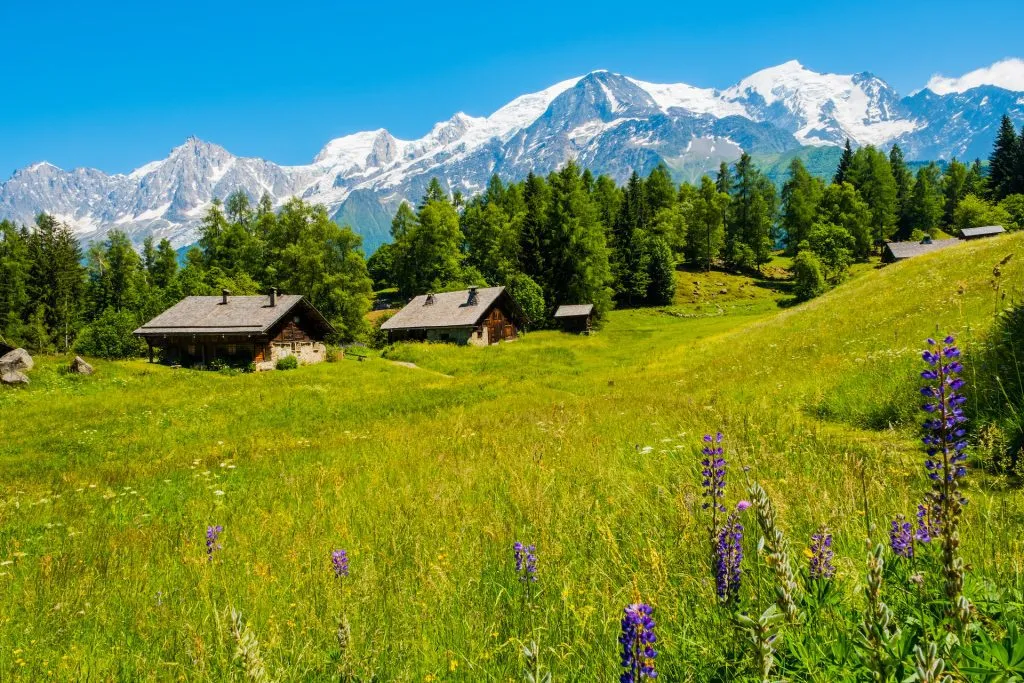
Day 2: Refuge Miage – Refuge de la Croix du Bonhomme
From Refuge Miage, the trail climbs over Auberge du Truc before descending into the resort village of Les Contamines. A walk along the river or a shuttle ride brings one to Notre Dame de la Gorge. The ascent that follows culminates at Refuge de la Croix du Bonhomme, perched atop Col de la Croix du Bonhomme.
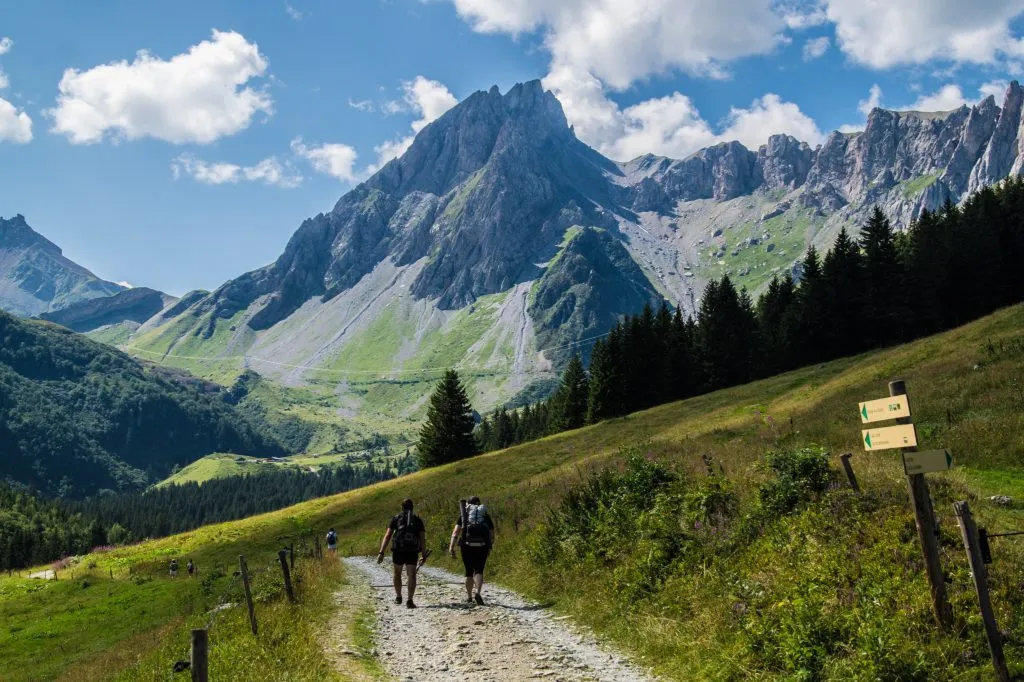
Day 3: Refuge de la Croix du Bonhomme – Rifugio Elisabetta
The day begins with a descent into the valley to Les Chapieux, followed by a steady climb past Les Mottets. The trail then ascends to Col de la Siegne, marking the border between France and Italy. The descent offers panoramic views of the glacial Vallée Lee Blanche and the Mont Blanc massif from the Italian side, concluding at Rifugio Elisabetta.
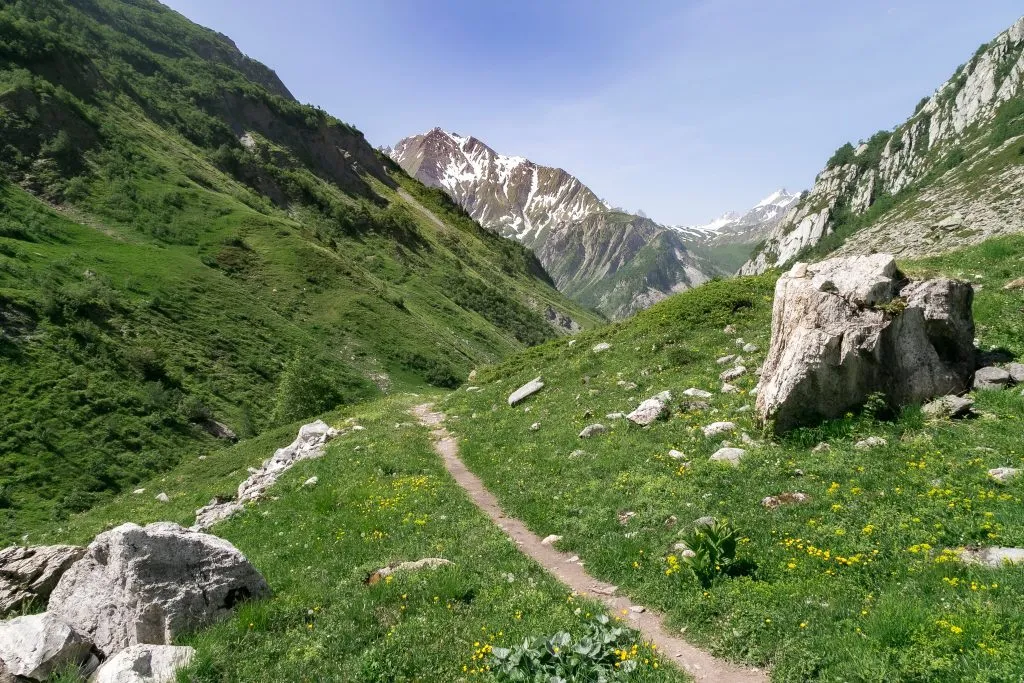
Day 4: Rifugio Elisabetta – Courmayeur
Opting for the scenic path to the right of the valley, hikers are treated to magnificent views of Monte Bianco, extending back to the previous day’s Col de la Siegne. The trail then descends to the ski slopes of Maison Vieille, followed by a steep descent to Courmayeur, the Italian counterpart of Chamonix. A cable car is available for those wishing to spare their knees.
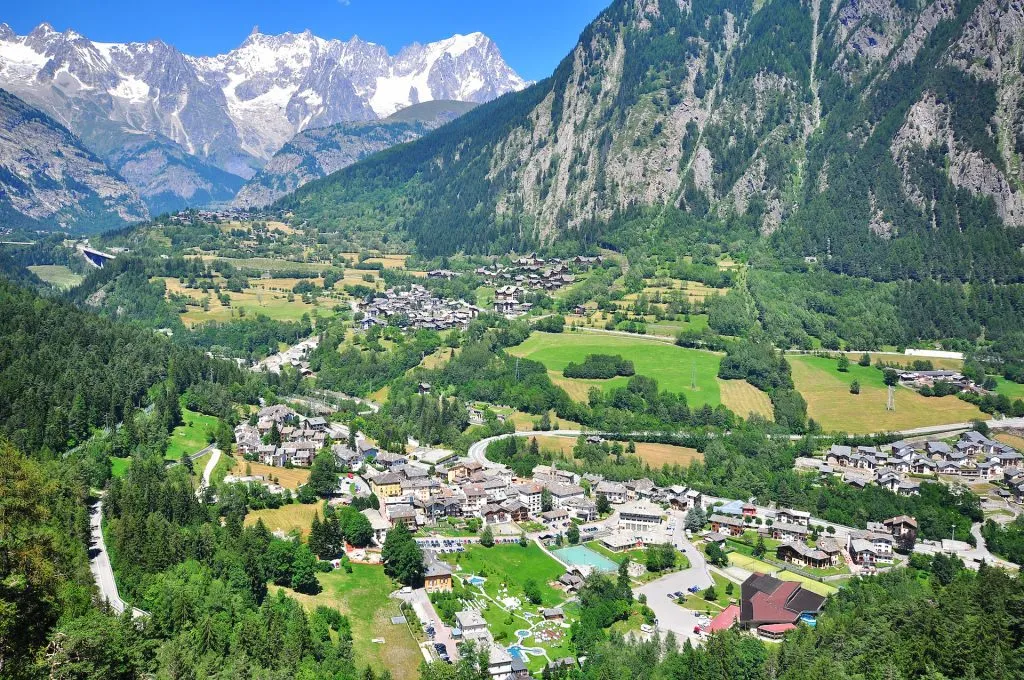
Day 5: Courmayeur – Chalet Val Ferret
Post-morning espresso, the trail leaves Courmayeur, ascending to Rifugio Bertone. Here, hikers face a choice: the classic TMB route along the north flank of the mountains or the more challenging but scenic mountain ridge trail over Mont de la Saxe. Both trails converge at Rifugio Bonatti, followed by a descent into the valley to Chalet Val Ferret.
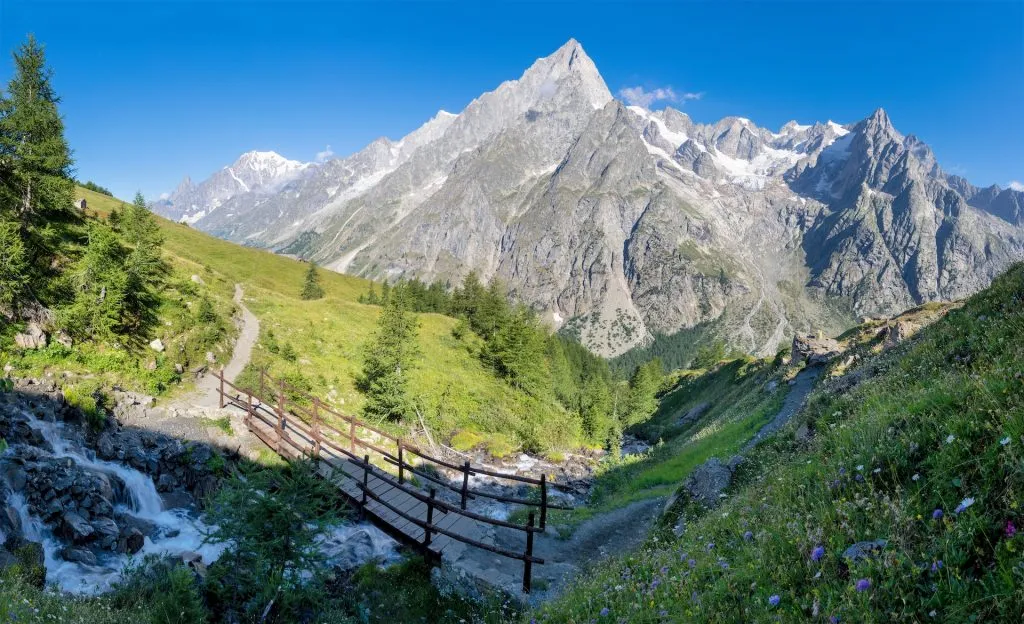
Day 6: Chalet Val Ferret – La Fouly
The trail ascends to Grand Col Ferret, marking the entry into Switzerland. The landscape transforms as the path descends into Ferret Valley, concluding in the village of La Fouly.
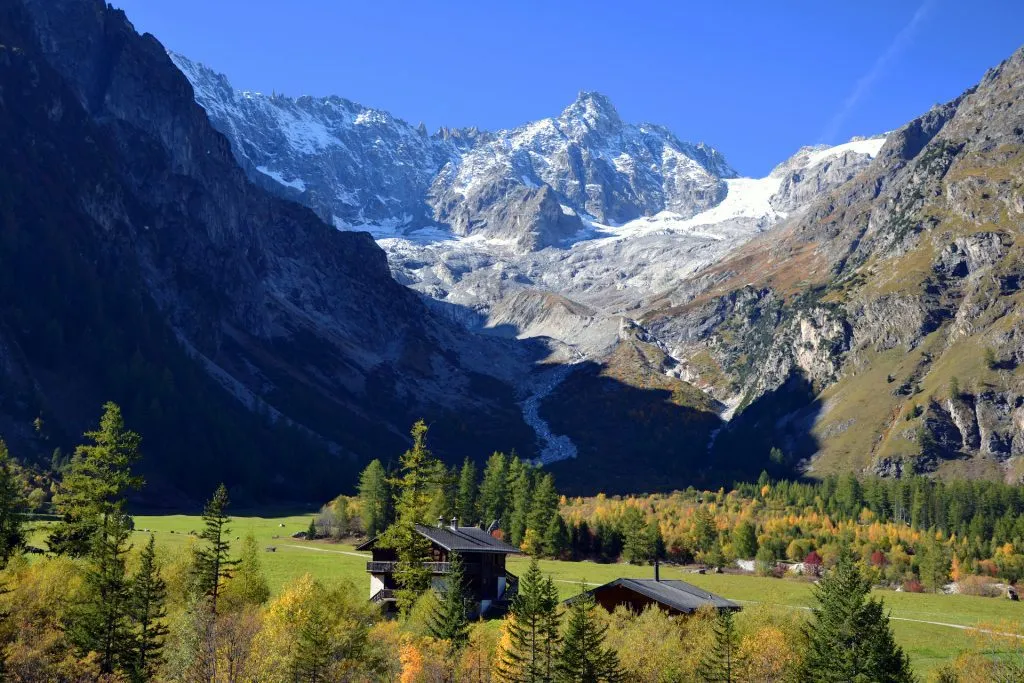
Day 7: La Fouly – Champex-Lax
This stage is a gentle traverse through the valley, past green meadows, and Alpine villages, concluding at the picturesque lake town of Champex-Lac.
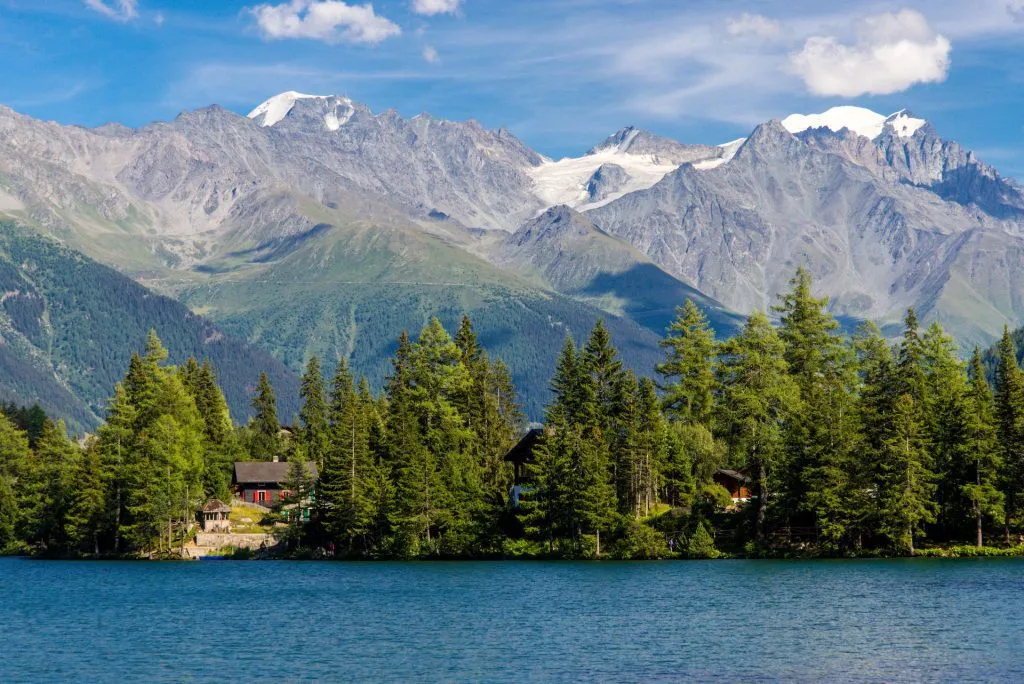
Day 8: Champex-Lac – Trient
Leaving the tranquility of the valley, the trail ascends to Col de la Forclaz, with sweeping views of the Rhone Valley. An alternative route crosses Fenetre d’Arpette, a more challenging but scenic option. Both routes descend to the Swiss village of Trient.
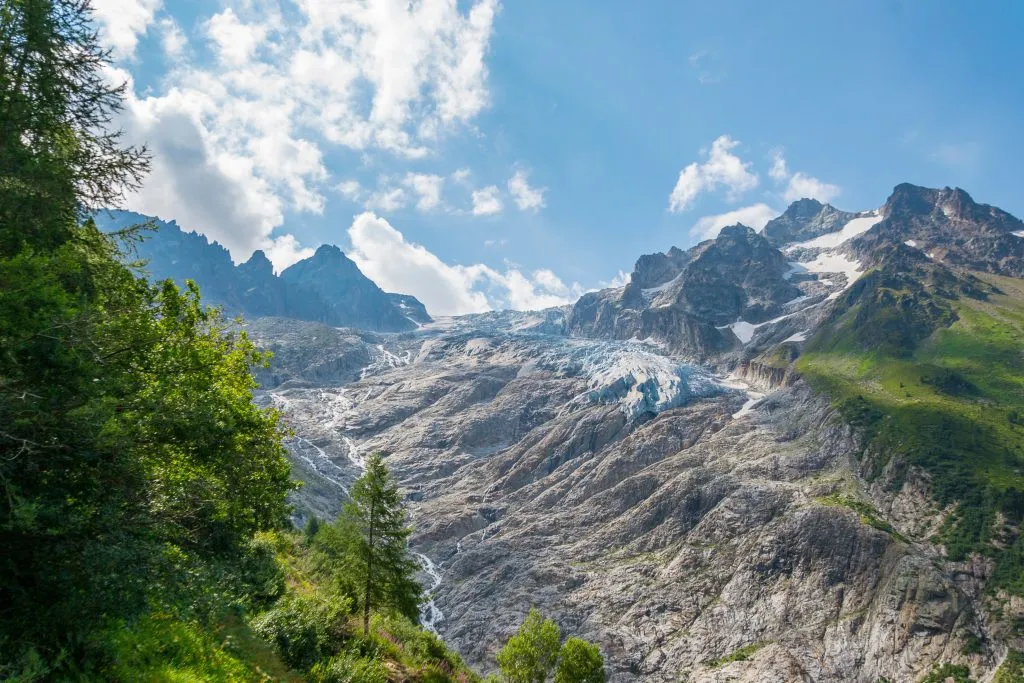
Day 9: Trient – Tré-le-Champ
The ascent to Col du Balme reveals the Chamonix Valley in the distance, a sign that the circuit is nearing completion. The trail continues into France, ascending to Col des Posettes and its namesake ridge, with stunning views of the massif. The descent brings the trail to Tré-le-Champ.
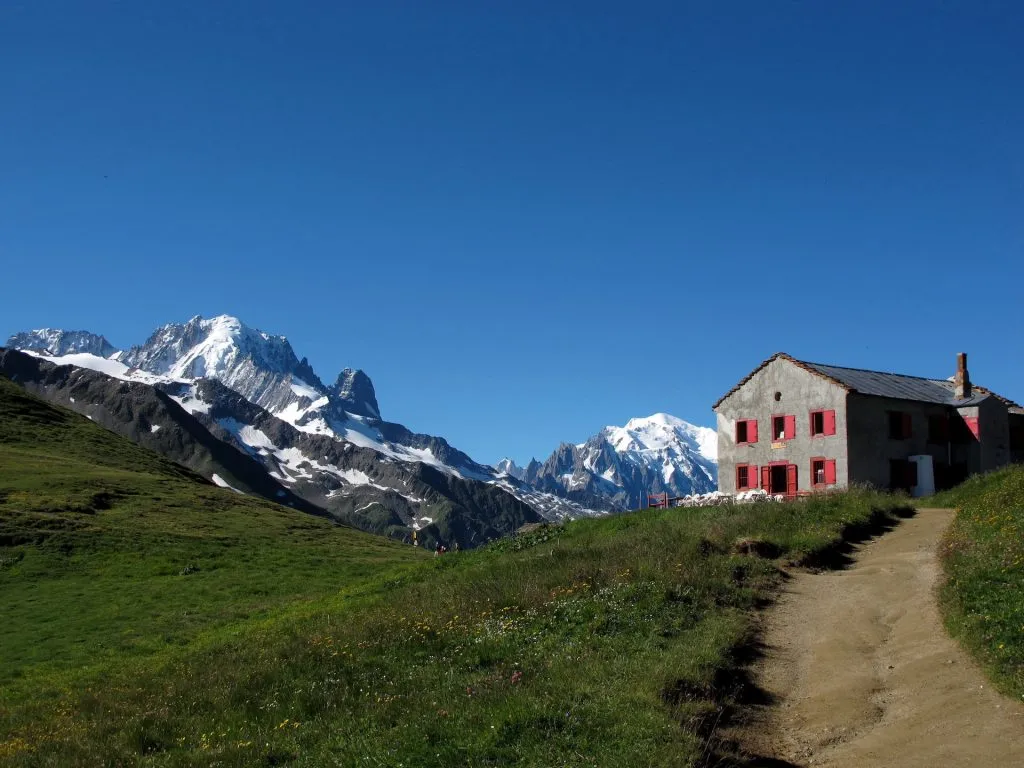
Day 10: Tré-le-Champ – La Flégère
The trail leads to the iconic ladders, followed by entry into the Aiguille Rouge National Park, home to abundant wildlife. A junction presents the option to ascend to Lac Blanc or take the scenic route over the Grand Balcon Sud to Refuge La Flégère.

Day 11: La Flégère – Les Houches
The final day continues along the Balcon Sud to Le Brévent, with the option of a cable car ride or hike to the peak. Either way, spectacular views of Mont Blanc await. The trail then descends to Refuge du Bellachat, followed by a long descent to Les Houches, concluding the journey.
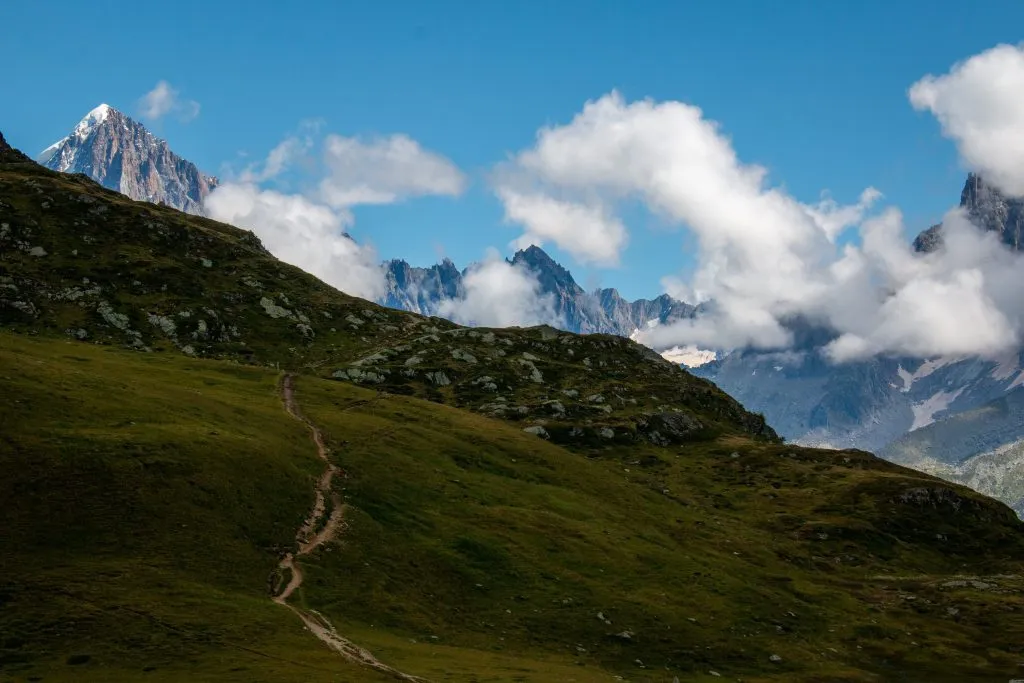
A Short History
Although the trail follows many ancient shepherd routes, it was walked whole for the first time in 1767 by Horace Benedict de Saussure. He was looking for ways to climb the peak of Mont Blanc, and he even offered a reward for the first ascent.
His exact trail is unknown, but it inspired many other travelers to the region afterward to repeat his feat. When the popularity of hiking went up in the following centuries, the infrastructure improved greatly, allowing even more people to come to enjoy the beauty of the Alps.
How difficult is the Tour du Mont Blanc?
With over 170 kilometers in length and over 10,000 meters of vertical gain and loss, Tour du Mont Blanc is definitely not an easygoing vacation. Every hiking tour that takes multiple days to complete is a serious undertaking and should be approached in such a manner.
That means that going straight from the couch is a big nope. If you’re young and reasonably fit, you might be able to do it, but it will not be as enjoyable as it could have been.
That being said, for those who call themselves hikers — meaning that they hike regularly — the hiking tour should not be that much of a problem. Yes, the end of each day will probably be a little hard (especially if long), but you should not be that tired the next morning.
And who can call themselves a hiker? Anyone who hikes regularly, at least once a week. And that means doing a hike with at least 500 meters of elevation each week. If you do that, you have a good fitness base to tackle the Tour du Mont Blanc.
Scroll down below if you want to learn more about how to prepare for it.
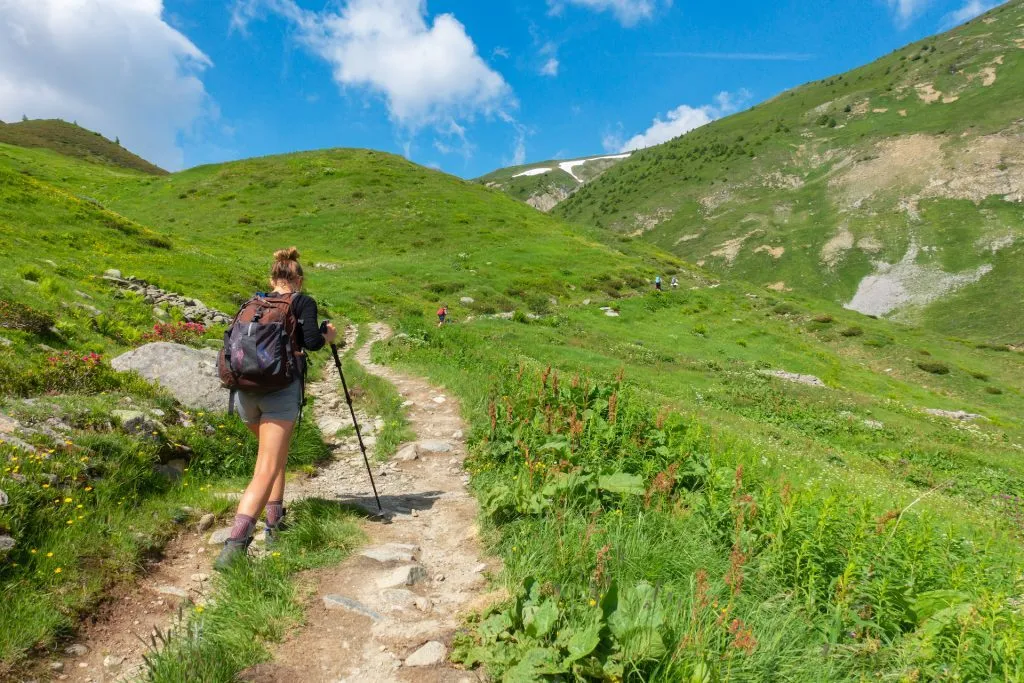
Technical Difficulty
The TMB is not technically difficult relative to other hiking routes.
To give you a sense of the scale, the most difficult routes would involve a lot of scrambling, using hands to cross exposed rocky terrain. Those should only be attempted by experienced mountaineers.
The easiest would be a reasonably wide (for at least two persons to comfortably meet) gravel trail, which doesn’t have any routes and rocks on it and is not exposed (exposure is the potential severity of injury if you fall off the trail). These can be done by anyone.
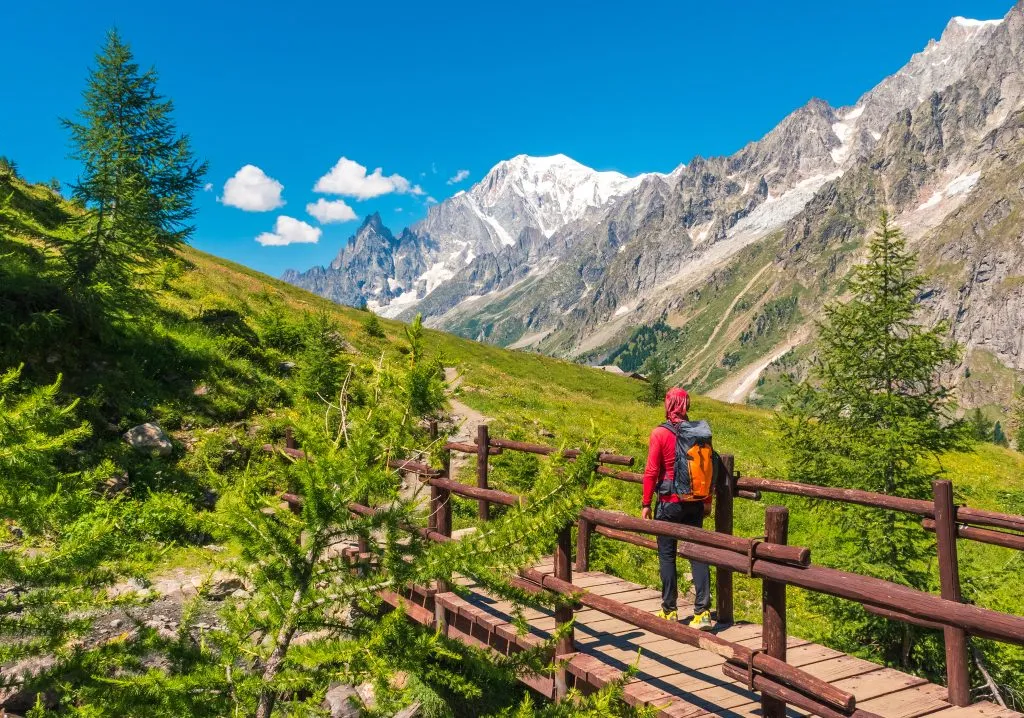
The Tour du Mont Blanc trail is not the easiest, as it goes over uneven ground, often riddled with roots and rocks, so you need to watch your step. There is also the (in)famous ladder section leading toward Lac Blanc.
Besides that, the route is quite easy. It is sometimes a bit exposed and narrow, but you never need to scramble to move forward. So what you most need to watch out for is spraining your ankle.
If you compare it to its neighbor, the Walker’s Haute Route, the TMB is easier in both technical and fitness terms.
Should you go self-guided or with a guide?
If you read all of the above and you got intimidated because you never hiked on such terrain before, then getting a guide is probably your best choice.
You won’t have to worry about anything, except getting to the meeting point. After that, just take in the scenery and follow the guide’s lead.
Now if you don’t want to do all the heavy lifting of tour planning, you can choose to do the Self-guided Tour du Mont Blanc.
You won’t have to worry about booking the accommodations (not as simple as it sounds) and you could get excellent advice from professionals who know the trail and can make it much easier for you.
You’ll still have to hike it on your own though. Don’t worry, navigation on the TMB is not a problem, because the trail is very well-marked with signposts. Compared to going with a guide, you’ll have much more autonomy and independence, and that is what more and more people choose.
If you want to also plan it completely by yourself, start doing it at least a year ahead. With all the logistics, accommodations, route choices, and equipment, it could take even more than that.
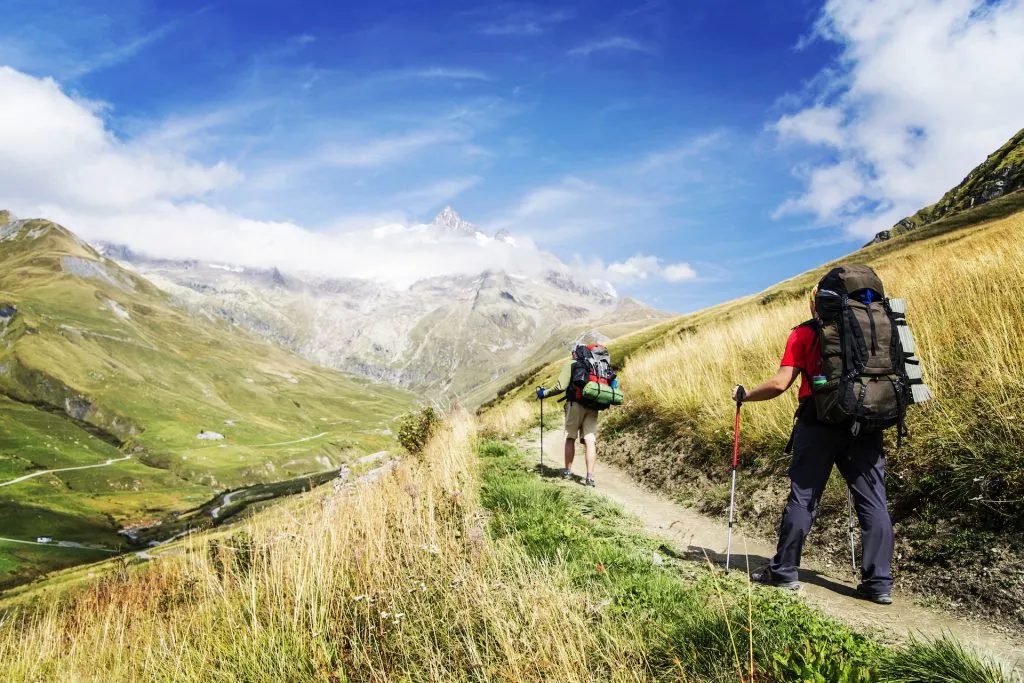
By yourself
Opting for a DIY approach allows you complete control over your itinerary, exploring at your own pace. This option requires you to plan your route, accommodation, and meals. While this approach gives you freedom, it also means you need to be prepared for challenges such as navigation and emergencies.
The TMB booking process can be daunting, as the accommodations should be booked early. You can use guidebooks, blogs, and trail maps to help plan your trek. However, booking accommodations individually can be time-consuming and may require flexibility in your plans.
It can also feel overwhelming if this is the first time you’re doing this, not knowing what to do in case your holiday goes awry.
Self-guided
A self-guided tour with a hiking agency offers a balance between the freedom of a personal approach and the support of a guided tour. The agency will handle logistics such as accommodation and transportation, while you can still plan your route and hike at your own pace.
This option is suitable for those seeking some support but wanting to maintain independence. Self-guided tour operators provide detailed itineraries, maps, and stage descriptions and may offer additional services like shuttle bookings, luggage transfers, and lunch packets.
It’s essential to choose a trustworthy self-guided hiking company that listens to your preferences and provides sufficient information.
You can learn more about how we operate if you visit our homepage.
Guided
A guided tour provides the most support and least freedom, with a guide leading you along the trail and (usually) a group of fellow hikers for camaraderie and safety.
This option is ideal for those new to hiking or seeking the knowledge and support of a guide.
The TMB is well-signed and waymarked, so a guided tour may not be necessary for experienced hikers with sufficient preparation, including a guidebook and navigation app.
How much does the Tour du Mont Blanc cost?
The main factors to take into account when trying to predict how much your Tour du Mont Blanc hike would cost are the number of days on the trail and the types of accommodations you’d use.
If you plan to do it all by yourself, it will take around 1000 € per person, depending on the above factors. Be aware that it means MUCH more time spent working on the plan by yourself.
If you choose to buy a self-guided version of TMB, the prices are from 1400 € per person.
But if you want to do it with a guide, the cost rises up towards 2000 € and more.
How to get to the starting point?
If you are like most TMB hikers, you will start the hike in Les Houches, just above Chamonix. You can also start the hike in any of the other towns on the way, like Courmayeur, Les Contamines, or Champex.
If you want to get to Chamonix, you can get there by plane, car or by bus.
By Plane
The closest airport is the Geneva Airport in Switzerland. From there, you can get to the Cham by train, bus or shuttle.
By Car
It’s easy to get to Chamonix from anywhere by car, especially if you’re in France, northern Italy or Switzerland.
By Train
There is a train station in the center of Chamonix, so you can get there with any international connection. They take much longer than other options but are the most scenic and most environmentally friendly.
By Bus
Buses are cheaper than trains and usually fewer transfers between different buses. But on the other hand, they take the most time and are the least comfortable.
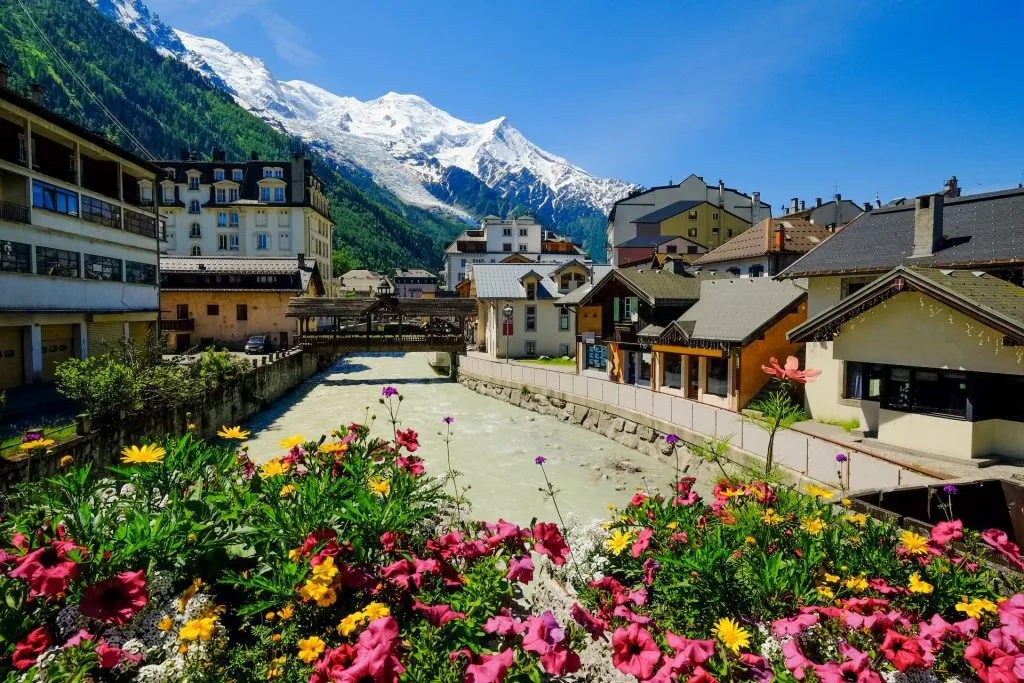
How to plan your Tour du Mont Blanc hike?
Planning a trip around the Tour du Mont Blanc takes a lot of time since it’s a multi-day hiking tour. And with many days come many options for routes, accommodations, and more.
The main reason you should start very early is that the accommodations tend to get full quite quickly. You should have your list at least half a year in advance.
And for that, you need to start planning soon — a year before.
Let’s see what are the most important steps.
Choosing the right itinerary
First thing you need to do is determine your itinerary. That starts with choosing if you’re going to do the whole trail or just a section of it.
That depends mostly on the number of days you have. It can go down to 7, depending on how fast and experienced a hiker you are, but to fully experience the route, you should do it in 11 days.
If you don’t have that much time, you can choose to only hike a specific section — for example, the highlights of Tour du Mont Blanc.
The other thing you need to choose is which of the alternative route options will you take, if any. That includes going to the iconic Lac Blanc or taking the ridge route above Rifugio Bertone. Either one you choose, you need to take into account the additional time that would take and plan accordingly.
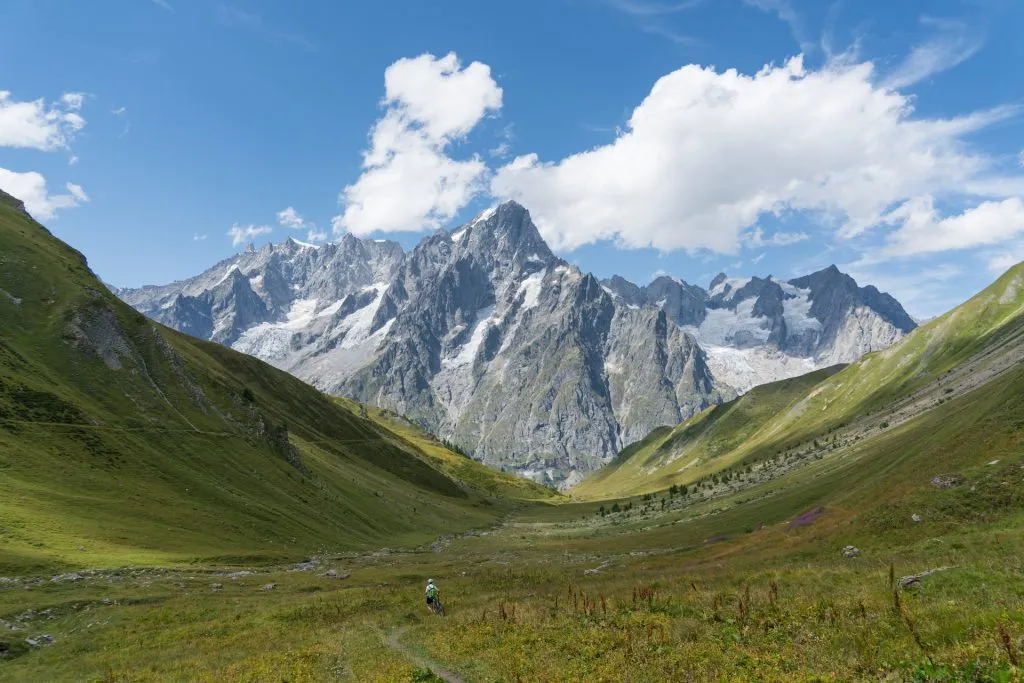
Which season is the best to go?
The hiking season for the Tour du Mont Blanc is open from June to September. The start of the season largely depends on the amount of snow the previous winter.
If there was a lot (or late snowfall), it could still be tricky to hike it in June. Many parts of the trail would be covered in snow, making it dangerous to cross without special equipment (ice axe, crampons) and the skills to use it.
A couple of people each year when setting off on the TMB unprepared for snowy conditions. And even if they are, competence cannot save you from avalanches.
On the other hand, if the winter was less snowy, you could even do it in May or before.
Still, you should be on the safe side and plan to do it somewhere between June and September.
You can avoid the crowds by doing it somewhere between late August and early September. You just have to check which mountain huts close towards the end of that month. The weather will be chillier, but not too cold, so have a bulkier winter jacket with you for the evenings.
Daily weather
The temperatures during the peak season are hot in the valley (sometimes +30°C), and from 20°C to 30°C in the mountains. These can drop to 10°C at night.
What you need to look for is the amount of wind and clouds on the day, because that can make it feel much colder at higher altitudes.
It is not a rare occurrence that a cold front with rain can cause a significant drop in temperature, even bringing some snow on the mountain passes. In that case, it’s best to wait in the safe embrace of the valley until the bad weather passes.
Tour du Mont Blanc Accommodations
Since the hike is one of the most (if not the most) popular in Europe, there have been many accommodation options springing up across the whole route.
The most popular option for most hikers are the mountain huts (called refuges), usually situated on mountain slopes or cols (mountain passes). They are the best choice if you want to really experience the authentic and romantic vibe of sleeping in the mountains.
But besides the huts, the valleys are full of different types of accommodations — from small family-run inns to boutique hotels. Staying in the valley really provides you with a lot of options to choose from.
Still, you need to book your accommodations early!
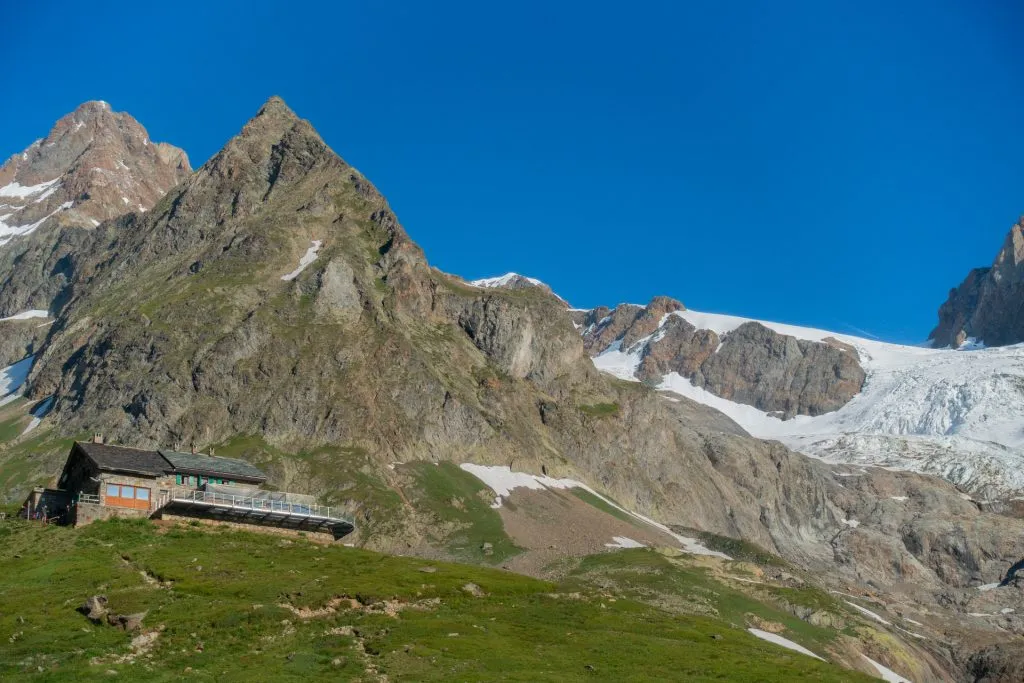
Food
The Tour du Mont Blanc will lead you through regions known for their cuisine, where you’ll have the opportunity to try many local dishes and experience unique tastes. Because the trail never takes you too far from civilization, there’ll always be a refuge, a town, or a village on the way where you can have a meal.
There are plenty of good options to choose from in the valley, especially the towns. But what about the refuges?
The breakfasts are not that special, as they are usually pretty bland and small. You get some bread and various spreads to put on, like jam and butter. Depending on the hut, some also have cereal, yogurt, cheese, and fruit.
On the other hand, lunches and dinners are usually 3-course meals with excellent food. What you need to worry about with them is that you eat too much at lunchtime and then cannot continue the hike because of feeling all tired and sluggish.
Use the opportunity when passing towns to buy snacks and energy bars for the way between the accommodations.
Water
Water is readily available in hotels and huts, so you can fill it up at each of the stops. You can also buy bottled water or fill it in some of the creeks you’ll find on the trail.
But if you decide to do the latter, first find the sign that says “eau potable” next to it. If it says “eau non-potable” it means that it is not drinkable.
How to prepare for Tour du Mont Blanc?
As we mentioned before, the Tour du Mont Blanc cannot be tackled straight from the couch. Even if you do it very slowly, you’ll still need to be ready for many straight days of hiking with a relatively heavy backpack.
By the time you get on the trail, you need to be someone who can call themselves a hiker. That means you should be able to do a 10+ km hike with 1000 meters of up and down easily. Why? You definitely don’t want to feel tired on the second day of your Tour du Mont Blanc.
So … How do you prepare for this? You need to start training.
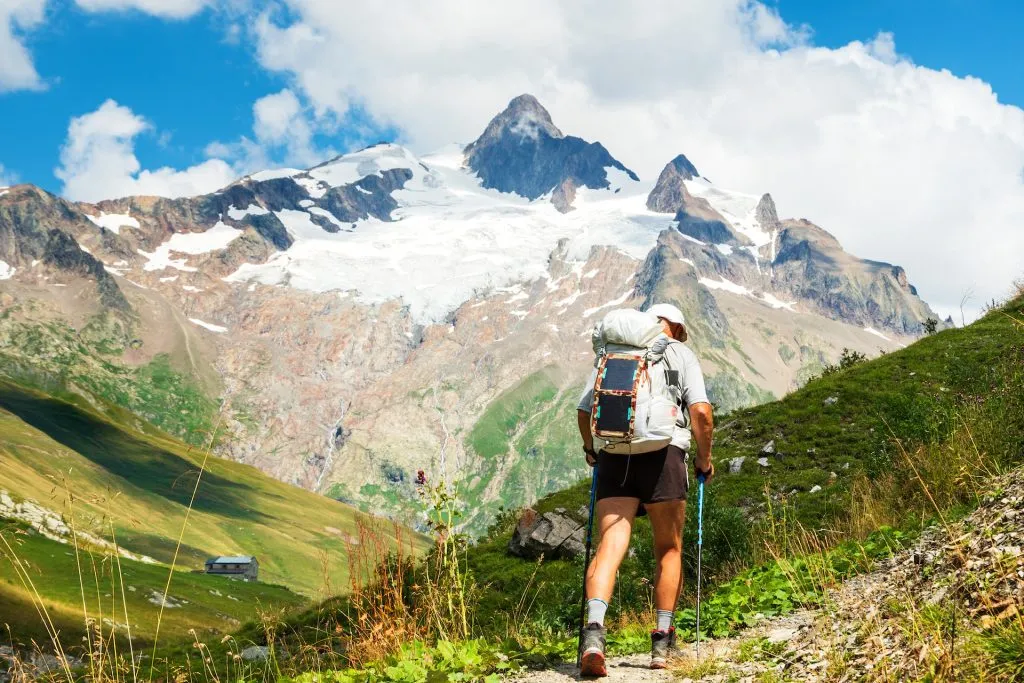
How to train?
We’re not sports experts here. But what we know comes from our experience with long-distance hiking. If you do not do the same types of hikes before starting the big adventure, you’ll suffer more when it gets to it. And that means a less pleasant experience.
Why spend all that time struggling to manage to the next refuge, if you can be happy and enjoy the epic scenery?
You need to start hiking weekly. That doesn’t mean you should jumpstart with very long hikes at first, especially if you haven’t been hiking much before. You should start slow, building up the distance and elevation gain each week.
Towards the end, you should also incorporate some two-day hikes (or more) during the weekend, to get your body used to hike multiple days in a row.
Even if you don’t have hiking trails as long or hills as high close to your home you can do it. Just do multiple circles around your local trail.
When you go on these training hikes, take the backpack you’re going to use on TMB and fill it up. It will help you figure out the right way to pack and get your back used to the weight. Put on your hiking shoes too (especially if you will have boots), so you can wear them before TMB.
And don’t forget! — take the stairs instead of the elevator.
What to Pack?
If you want to enjoy your hike, keep your backpack light by packing only the essentials. Every extra pound will feel like dead weight on your shoulders.
You will need a backpack with somewhere between 25 to 40 liters of space. Anything more and you’ll pack too heavy.
The most important thing will definitely be your shoes. Which type you choose depends on your preference and experience with different sorts. TMB can be done in both trail running sneakers (as thousands do so in UTMB race), hiking shoes or hiking boots.
You need to have a lot of experience with mountain terrains to take trail running shoes, so for an average hiker, it’s still best to take hiking shoes. They are sturdy and supportive enough to carry all the extra weight of the backpack, but they’re not as bulky and heavy as boots. All in all, you have to take something you’ll feel comfortable hiking in for many miles a day over steep, rocky terrain.
Here is our full Tour du Mont Blanc packing list:
General
- Hiking shoes/boots
- 25 to 45-liter backpack (depending on the number of days on the trail)
- Hiking poles
Clothes
- Base layer top (we recommend merino wool)
- Sports T-shirt (for the warm days)
- Mid-lay top (like a fleece)
- Hiking shorts (in warmer months)
- Hiking long pants
- Windproof jacket
- Waterproof jacket (not needed if you have a high-quality hardshell which is both windproof and waterproof)
- Waterproof pants
- Comfortable clothes for the evening in huts and hotels
- Warm down jacket (if hiking in colder months)
- Warm hat
- Sun cap
- Gloves
- Hiking socks
Other
- Sunglasses
- Sunscreen
- Small first aid kit
- Water bottle
- Toiletries
- Blister plasters
- ID or passport
- Cash
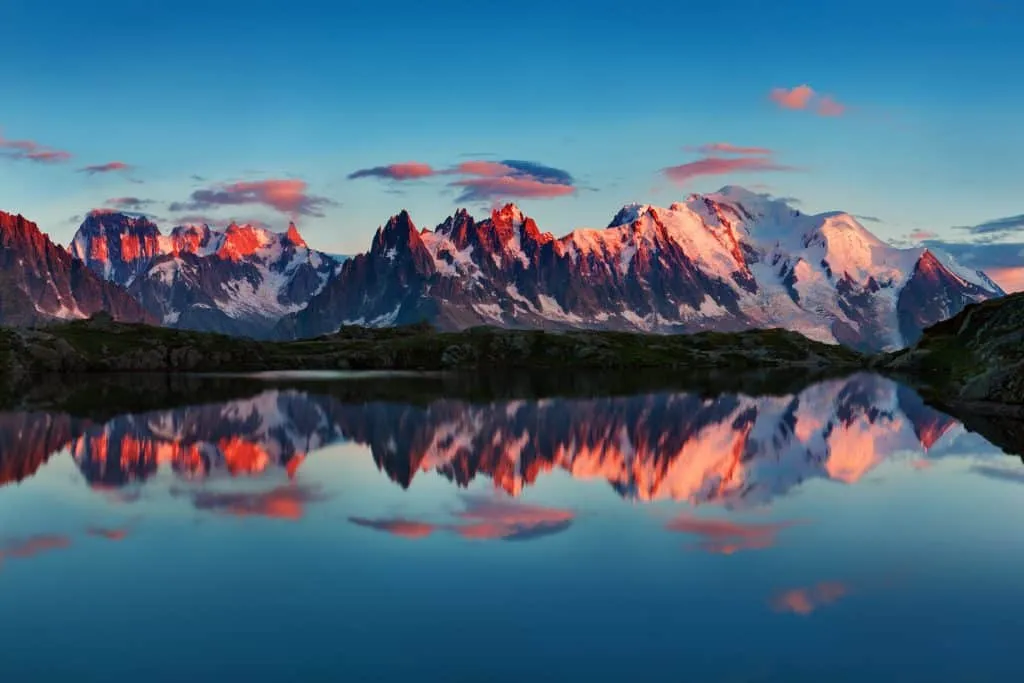
12 essential tips for the Tour du Mont Blanc hike
1. It’s important to be mindful of your personal limits and avoid pushing yourself too hard, as this can lead to unnecessary risks and potential harm.
2. Sticking to marked trails is essential to prevent accidents and ensure you don’t get lost, as deviating from the path can lead to dangerous situations.
3. Taking regular breaks during your hike allows you to rest and rejuvenate while also giving you the opportunity to fully appreciate and enjoy the beautiful scenery around you.
4. Informing someone about your plans and location is a crucial safety measure, as it ensures that someone knows where you are in case of an emergency.
5. When staying at accommodations, it’s polite to use designated areas for storing outdoor gear, such as boots and poles, to keep communal spaces tidy and organized.
6. Earplugs can be a useful addition when in shared sleeping quarters, as they help to minimize noise and ensure a good night’s sleep.
7. Many accommodations offer shower facilities, but it’s necessary to be mindful of time and water usage, especially during peak times when others may be waiting to use the facilities.
8. Preparing your own meals or bringing outside food into accommodations is typically frowned upon, so it’s best to avoid eating your own meals in refuges.
9. Being aware of your surroundings and yielding to others on the trail, such as bikers, runners, or faster walkers, ensures a smooth flow and positive experience for everyone.
10. A simple greeting, such as “Bonjour,” can go a long way in fostering a sense of community among hikers and creating a friendly and welcoming atmosphere on the trail.
11. When listening to music, it’s considerate to use headphones to avoid disturbing others and ensure everyone can enjoy the natural sounds of the outdoors.
12. Respecting nature is crucial, which means leaving no trace behind and minimizing disturbances to the environment. Activities that may harm ecosystems, such as swimming in lakes, should be avoided.
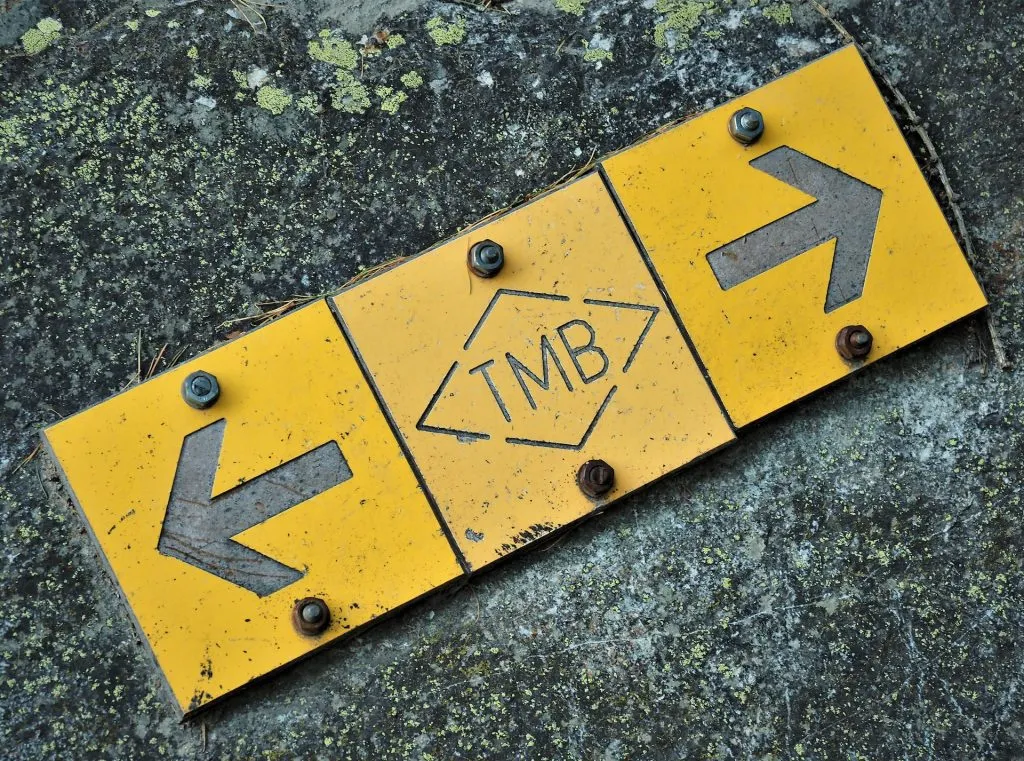
Where to book your Tour du Mont Blanc hiking tour?
The above guide is long and thorough. But that doesn’t have to intimidate you from going on your Tour du Mont Blanc.
Booking a self-guided Tour du Mont Blanc can save you a lot of time, stress, and hassle. And it’s not even that much more expensive than planning the tour all by yourself.
Check out our Tour du Mont Blanc treks, select your favorite, send us an inquiry and start counting the days till your epic adventure.



